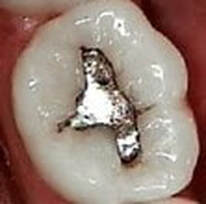
Untrue:
Small Amounts of Mercury Won't Hurt You
Amalgam Dental Fillings are Safe
No One Uses Mercury in Dentistry Anymore
Your Body Can Handle Mercury
Storing Mercury in your Head is Just Fine
1. Mercury is considered one of the most toxic elements on earth.
2. Approximately 50% of the material in amalgam, "silver," fillings is mercury.
3. About 30 tons of mercury is used annually in US dentistry.
4. About 300 tons of mercury is used globally each year in dentistry.
5. Amalgams are the leading end-use of mercury in the US per the 2010 US Geological Survey.
6. The US EPA claims dental office mercury waste is the largest contributor to public owned
water treatment centers.
7. Dangerous levels of mercury vapor can be measured inside and outside of dental offices after
mercury is used.
8. Fish are contaminated with mercury through water waste, crematorium incineration waste.
and municipal sewage.
9. The United Nations Environmental Program in 2010 claimed crematoriums released 3.6 tons
of mercury.
10. Mercury can be absorbed by the skin, lungs or ingested.
11. Mercury vapor can be absorbed into the bloodstream and stored in organs and the brain.
12. A fetus can be affected by the mercury in a mother's teeth as can a newborn through breast
milk.
13. Most consumers are unaware that amalgam, "silver," fillings contain mercury.
14. There is no informed consent necessary before using mercury in a patient's mouth.
15. Consumers who opt for composite fillings usually do so for cosmetic reason, not from
awareness of mercury dangers.
16. The WHO claims dental fillings contribute to more mercury toxicity of the human body than
all other potential sources combined.
17. 122 million human bodies exceed the safe levels of mercury as established by California EPA
 RSS Feed
RSS Feed